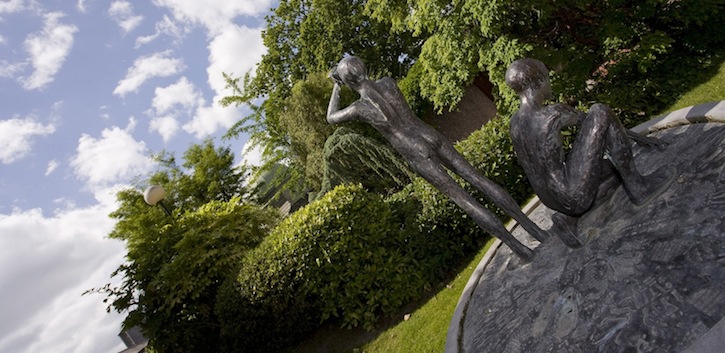2013 Press Releases
Around the world in 63 days

UCC PhD student Oliver O'Hanlon (Dept of French/School of History) on the reporters that raced to circumnavigate the globe (reproduced courtesy of The Irish Times).
An Irishman’s Diary: Reporters in race to circumnavigate the globe
From the moment Jules Verne’s fictional hero, Phileas Fogg, raced around the world in an unbelievable 80 days, a great band of adventurers was inspired to try and beat him. On his way around the world, almost 30 years after Fogg, the French journalist, Gaston Stiegler, got his first glimpse of the Irish coastline on July 30th, 1901. He described it, unsurprisingly, as green and hilly.
Sailing from New York on the Belfast-built transatlantic ocean liner RMS Oceanic, Stiegler considered whether to gain some time by getting off at Queenstown (now Cobh) and taking a fast train to Dublin. He would then take a boat to Holyhead and another fast train through to London. This would have been quicker than remaining on the liner and would have afforded him some precious extra hours and he would have been closer to his destination, Paris. A Frenchman, standing on the quay at Queenstown, urged Stiegler to remain on-board. It seems that the Oceanic was delayed, something which Stiegler hadn’t known, and therefore the fast train was already gone and he would be better off staying on the boat to Liverpool and taking a train from there to London.
In the end, Stiegler managed to go around the world in 63 days. Well, 63 days and 13 hours to be exact! He left the Gare du Nord in Paris on May 29th, 1901 and was welcomed back there like the prodigal son, by a massive crowd of cheering spectators on August 1st. Having travelled on an east-west trajectory from Paris, he made short work of Europe and Asia, passing through Berlin, St Petersburg, Moscow, Samara, Vladivostok, before arriving at Yokohama. He then sailed to Victoria in Canada, took a train to Seattle and it was more or less plain sailing from there across the rest of the United States to New York.
Because he was constantly on the move, Stiegler had to travel light. He carried just one small attaché case and one suitcase, containing one blanket and two overcoats; one for summer and one for winter. He had been warned in advance that the Siberian nights were fiercely cold. He also brought with him the smallest and lightest camera he could find. Stiegler didn’t seem to mind being restricted to such limited material possessions. He was a little put out though, that he would not be able to bring an evening suit, a must for every respectable traveller on an ocean liner at the time apparently!
Stiegler was a reporter for the French daily newspaper, Le Matin, and his front page articles would describe the weird and wonderful sights that greeted him along the way. The paper also published maps of the route and diagrams of the length of the trip. His articles were subsequently brought together and published later that year in book form. It contained many of the photographs that he had taken en route around the world.
For some reason, the year 1901 saw several newspaper men attempt to circumnavigate the globe in the shortest time possible. As Stiegler was on his way around, Henri Turot of rival newspaper Le Journal was doing the same journey around the world, but in the opposite direction. Their story was inevitably picked up by the news agencies and ended up in newspapers all over the world which commented on the novelty of the escapade. At the time, the New York Times suggested that it was a dramatisation of Verne’s story on the Paris stage in the preceding weeks that had inspired the two Frenchmen in the first place. Meanwhile, in the US, also in 1901, the much maligned newspaper publisher, William Randolf Hearst, was trying to generate publicity for his newspapers. He sponsored three 17-year-old schoolboys to race against the French newspaper men. Needless to say, Charles Fitzmorris, representing the Chicago American, William Crittenden for the San Francisco Examiner and Louis St Clair Eunson for the New York Journal didn’t manage to beat Stiegler’s time of 63 days.
As well as being informative and educational for the newspaper-reading public, these types of articles were very beneficial for the individual titles. Editors and publishers relished the coverage they received from these “journeys around the world”. The publicity for the various newspapers generated by Stiegler & Co simply couldn’t be bought. Although he may be a footnote in history, Stiegler’s name was known on all continents in 1901 and his movements on the quayside at Queenstown 112 years ago were closely watched by many around the world.
---
